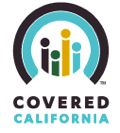The Affordable Care Act. That’s Obamacare, right?
Yes. The term originated with Republican critics of the Affordable Care Act, but eventually evolved into popular non-pejorative usage. It dates back to 2007. The word “Obamacare” went viral when Mitt Romney used it on the campaign trail that May. (The full name that next to nobody uses is the Patient Protection and Affordable Care Act.)
Is Obamacare going to go away?
The nickname no doubt is on borrowed time, as President Trump has declared war on the healthcare scheme. The Republicans vow to replace Obamcare with their own plan, but no one knows how things will shake out. Uninsured people with pre-existing conditions should strongly consider signing up for coverage under the Affordable Care Act in case insurers are again allowed to discriminate against applicants with health problems.
Isn’t this socialized medicine?
It’s a slippery term, but the answer is no. In the United Kingdom, “socialized medicine” is a better fit because most health care is delivered by government employees or subcontractors. Universal health care systems are found in many nations, including Spain, Italy, Australia, Denmark and Sweden. But not in the United States, even with the sweeping reforms that went into effect Jan. 1, 2014.
 What is the Health Benefit Exchange?
What is the Health Benefit Exchange?
The federal Affordable Care Act called for establishment of state insurance exchanges, or marketplaces. In California, the primary marketplace has been dubbed Covered California. Not all states have them.
Eligible individuals, families and small businesses are able to shop for health insurance, providing they’re residents. For 2019, the three-month “sign on” (open enrollment) period began Oct. 15 and runs through Jan. 15, with coverage going into effect in January if you sign up by Dec. 15. Many of those shoppers will be eligible for tax credits and other subsidies. California was the first major state to clear the way for a marketplace, and Covered California is widely regarded as the nation’s leading Obamacare operation.
How do I meet the requirements for Covered California?
If you’re a California resident, don’t have access to reasonably priced health insurance and you’re under income caps, you can use the marketplace and seek subsidies. People with pre-existing conditions who were previously “uninsurable” would be a good example of others who might want to use the exchange, even if they don’t qualify for tax credits. It might be easier to deal directly with insurance companies, however. (“We don’t have bugs,” one Kaiser sales rep said.)
Do I have to buy my insurance via the Health Benefit Exchange?
No. The act says: “Nothing in this act or anywhere in the bill forces anyone to change the insurance they have, period.” Insurers will continue to offer plans outside the system. If your insurance coverage comes via an employer, like most people, you don’t have to do anything — buying via the exchange probably wouldn’t make sense anyway. If you do meet the requirements for Covered California subsidies, compare the rates and factor in possible financial support before deciding.
I like my insurance. Do I have to change my plan?
Not unless you’ve been told your plan is discontinued.
Am I eligible for financial assistance?
Perhaps. It’s based on the poverty line, but you don’t have to have a very low income. Covered California says an individual making up to $44,680 could qualify for a tax credit. A family of four earning up to $92,200 may be eligible. Generally, the more you make, the less you get in subsidies.
So if I make more than $44,680 I can’t use the exchange?
If you’re a resident, you’ll be able to shop there, but without subsidies. (Again, it might be simpler to deal directly with the insurers.)
How do I get the financial assistance?
Assuming you qualify, one of three ways:
- Tax credits: No need to wait; these can be used to cut your premiums right away.
- Cost-sharing subsidies: Basically, reductions in co-payments.
- Medi-Cal assistance: Will be available for some people under age 65. Low-income individuals and families, those with disabilities are candidates for free services.
You have to go through Covered California in order to get tax credits. This does not affect federal tax deductions for medical expenses, at least not yet.
When does Covered California enrollment begin and end?
The 2019 open enrollment runs through Jan. 15, 2019. Medi-Cal participants can enroll at any time. Small-business employees are not subject to the open enrollment limits. If you have a “life event” such as a birth or loss of job, you can enroll within several months of that time.
Where do I go if I’m not a Californian?
Start with the federal government’s Obamacare web site.
What else happened Jan. 1, 2014?
These provisions of the Affordable Care Act — Obamacare — went into effect with the new year.
As of Jan. 1, 2014, the new law:
- Prohibits denial of coverage to adults with pre-existing conditions.
- Expands eligibility for the Medi-Cal program.
- Provides tax credits for small business that provide coverage.
- Provides tax credits for individuals and families with incomes up to $94,200 (for a family of four) who buy their insurance through the Health Benefit Exchange.
(Note: The requirement that large employers provide coverage to those who work at least 30 hours per week has been delayed until 2015.)
You can control how much of your tax credit goes to help pay your health plan premiums. The tax credit will be sent directly to your insurance company. You don’t have to wait until tax time to apply these tax credits to your premium balance.
Can I be denied coverage due to my health?
Your coverage can’t be dropped or denied because of a chronic or pre-existing condition. Even if the insurance companies refused you in the past, you are eligible for all health products provided via the health exchange. This was one of the cornerstones of the Affordable Care Act. Insurers are required to provide “essential health benefits” to everyone.
Do I pay more for pre-existing conditions?
Insurers are prohibited from using your medical condition or history to determine how much your health insurance will cost. But you must buy the insurance during open enrollments to receive this protection. Age continues to be a key factor in premium rates, along with your address. The young pay less; seniors pay more. That hasn’t changed. Uninsured people with pre-existing conditions and in need of care are facing more significant barriers in the short term as a result of this transition.
What about smoking?
Insurers have to offer health coverage to smokers. But in many states those policies come with a “tobacco surcharge” of up to 50 percent of the premium amount. Health exchange users who qualify for subsidies won’t get help here: The smoker must pay all of that add-on. In California, however, recently passed legislation prohibits insurers from taking tobacco use into consideration.
What are “essential health benefits”?
The list is pretty long. It includes most doctor visits, prescription drugs, lab services and X-rays, maternity and pediatric care, mental heath services and substance abuse treatment. Emergency services and hospitalization are covered as well. Read more about California’s essential health benefits.
What are “metal levels”
Obamacare policies are classified in four “metal levels”: bronze, silver, gold and platinum. Basically, the less expensive the metal — bronze being cheapest — the lower the monthly premiums. The higher levels have lower copayments and may offer considerable savings in the long run. Read about metal levels at Covered California.
Can I decide what type of coverage I get?
Yes, in most cases. There are four levels of coverage for new policies:
- Bronze 60
- Silver 70
- Gold 80
- Platinum 90
- Catastrophic care (under age 30 or with severe hardships)
The numbers refer to percentages of costs covered by the premium, roughly. You might choose to pay more for insurance at a higher level (platinum or gold), but then have cheaper deductibles. Or pay lower premiums (silver or bronze) and higher deductibles. Similar to choices we’ve all been making for years.
The Covered California calculator will estimate your cost and the level of support, if any.
Will my insurance premiums go up in 2019?
Probably, but that’s always been the case. The average increase for Covered California policies was almost 9 percent for 2019. Consumer advocates urge a quick review of all plans for 2019 to see which best suits your needs. (Remember, you don’t have to buy insurance through Covered California. Find a better deal, grab it.)
What if I want to renew my Covered Cal policy?
You don’t have to do anything, just continue to pay the premiums.
Who is offering the actual policies?
Most of the usual health insurers, but not all. Anthem Blue Cross, Blue Shield, Kaiser Permanente, Health Net. View the list of health insurance providers.
Will my doctor be in the Covered California plan network?
Call and confirm with the doctor’s office, even if the physician is listed as being part of the policy’s network. Physician directories have been notoriously flawed.
Can I buy dental insurance through the health marketplace?
California’s Obamacare operation is offering new “family” dental plans to its offerings, in addition to the previously announced pediatric dental expansion. The dental plans that offer care to adults are stand-alone and come with no financial assistance.
Do I have to have medical insurance?
No. no longer. “Shared responsibility” penalties ended in 2019.
I live in California but am not officially a resident. Can I buy insurance?
Not through Covered California. For the Health Insurance Marketplace, “you must live in U.S. and be a citizen or national (or lawfully present).” (The largest remaining uninsured group would be 8 million illegal immigrants.)
Which agency oversees the Act in California?
The California Department of Insurance plays a limited role. Voters in fall 2015 rejected an expanded role.
Who’s in charge of the program?
 Janice Rocco, left, deputy commissioner of Health Policy with the California Department of Insurance, oversees the implementation of the federal Affordable Health Care Act for California. She surveys the changes in this article on the Affordable Care Act in California.
Janice Rocco, left, deputy commissioner of Health Policy with the California Department of Insurance, oversees the implementation of the federal Affordable Health Care Act for California. She surveys the changes in this article on the Affordable Care Act in California.
What if I’m having trouble with an insurer?
Call the California Department of Insurance at 1-800-927-4357, 8 a.m.-5 p.m. weekdays.
Recent Comments